Lee
and Karen Duquette
enjoyed The St. Louis Zoo
in St. Louis, Missouri
May 27, 2022 |
The Saint Louis
Zoo, officially the Saint Louis Zoological Park, is a zoo in Forest
Park, St. Louis, Missouri. It is recognized as a leading zoo in animal
management, research, conservation, and education. The zoo is accredited
by the Association of Zoos and Aquariums (AZA). Admission is FREE based
on a public subsidy from a cultural tax district, the Metropolitan Zoological
Park and Museum District (ZMD); fees are charged for some special attractions.
A special feature is the 2-foot narrow-gauge Emerson Zooline Railroad
with passenger trains pulled by Chance Rides C.P. Huntington locomotives
that encircle the zoo, stopping at the more popular attractions. (Karen
Duquette did not photograph the railroad though).
There was a free concert going on in the zoo on this date. |
| |
Below: There
was a big parking lot across from the entry, but there was a fee to
park there. The very small, free parking lot across the the bridge from
the zoo was just a short walk, and Lee Duquette was lucky enough to
find a parking spot.
 It had
a playground and a few things for kids to climb on. Too bad the big
turtle did not like Lee Duquette very much. Or maybe it liked him a
lot, and that is why it tried to eat him. It had
a playground and a few things for kids to climb on. Too bad the big
turtle did not like Lee Duquette very much. Or maybe it liked him a
lot, and that is why it tried to eat him.
|
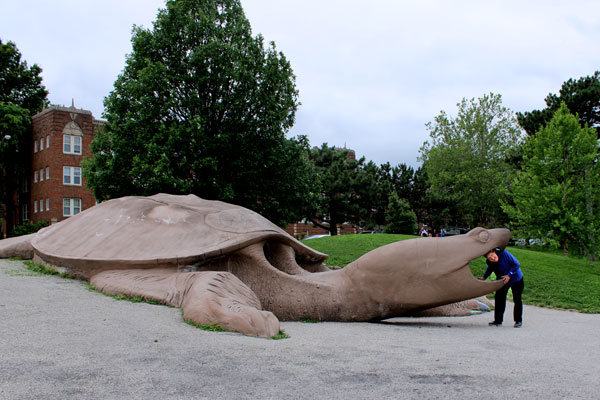 |
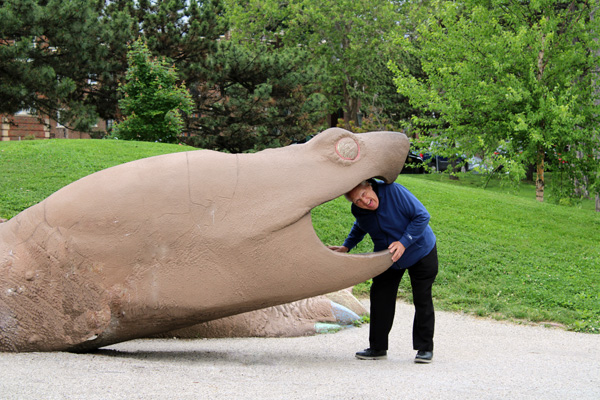 |
Below: Scenery
just before entering the zoo. |
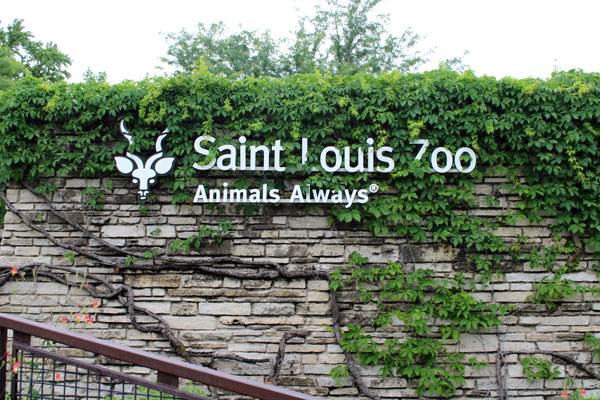 |
 |
Below: Information posted
about caves in Missouri and some FAKE cave stalactites. This seemed
like a strange exhibit to Lee and Karen Duquette. Maybe because they
have been to several real caves. |
 |
 |
A funny event: While Lee Duquette was buying
some food, a little boy ran up to Karen Duquette and touched her NECK.
(Karen had a turtleneck top on so he did not actually touch her skin)
Then he ran back to his parents. Karen just stood there in shock. The
parents did not seem to think his behavior was odd. |
Below: A small pond with
a fake elephant blowing water out of its trunk. |

|
Below: The capybara is a
fat cavy rodent native to South America. It is the largest living rodent.
Its close relatives include guinea pigs and rock cavies, and it is more
distantly related to the agouti, the chinchilla, and the nutria. The
capybara inhabits savannas and dense forests and lives near bodies of
water. It is a highly social species and can be found in groups as large
as 100 individuals, but usually lives in groups of 10–20 individuals.
The capybara is hunted for its meat and hide and also for grease from
its thick fatty skin. It is not considered a threatened species. |
 |
 |
Below: Lee and Karen Duquette are not sure what the animals in the two
photos shown below are. There was not any signs. |
 |
 |
Below: The black
rhinoceros is native to eastern and southern Africa including Angola,
Botswana, Kenya, Malawi, Mozambique, Namibia, South Africa, Eswatini,
Tanzania, Zambia, and Zimbabwe. Although the rhinoceros is referred
to as black, its color varies from brown to grey.
The other African rhinoceros is the white rhinoceros (none were seen
here at this zoo).
The species overall is classified as critically endangered (even though
the south-western black rhinoceros is classified as near threatened).
Three subspecies have been declared extinct, including the western black
rhinoceros. |
 |
.jpg) |
 |
Below: The African
wild dog, also called the African painted dog and the African hunting
dog has been listed as endangered since 1990. Its natural enemies are
lions and spotted hyenas: the former will kill the dogs where possible,
while hyenas are frequent kleptoparasites (they steal food from another
animal).
The African wild dog regurgitates food for its young, but also extends
this action to adults, as a central part of the pack's social life.
The young are allowed to feed first on carcasses. |
 |
 |
 |
Below: The
red river hog or bushpig is a wild member of the pig family living in
Africa, with most of its distribution in the Guinean and Congolian forests.
It is rarely seen away from rainforests, and generally prefers areas
near rivers or swamps. |

|
 |
The serval is
a wild cat native to Africa. The serval is a slender, medium-sized cat
that stands 21–24 inches at the shoulder and weighs 20–40 pounds. It
has a small head, large ears, a golden-yellow to buff coat spotted and
striped with black, and a short, black-tipped tail. The serval has the
longest legs of any cat relative to its body size.
The serval is a solitary carnivore and active both by day and at night.
It preys on rodents, particularly rats, small birds, frogs, insects,
and reptiles, using its sense of hearing to locate prey. It leaps over
6 feet 7 inches above the ground to land on the prey on its forefeet,
and finally kills it with a bite on the neck or the head. |

|
 |
 |
Below: The cheetah is a large
cat native to Africa and central Iran. It is the fastest land animal,
estimated to be capable of running at 50 to 80 mph with the fastest
reliably recorded speeds being 58 and 61 mph. It typically reaches 26–37
inches at the shoulder, and the head-and-body length is between 3 feet
7 inches and 4 feet 11 inches. Adults weigh between 46 and 159 ponds.
Its head is small and rounded, and has a short snout and black tear-like
facial streaks. The coat is typically tawny to creamy white or pale
buff and is mostly covered with evenly spaced, solid black spots. Four
subspecies are recognized. |
 |
 |
Below:The Cheetahs
were way in the back and hard to see. But Karen Duquette zoomed in on
them with her camera. |
 |
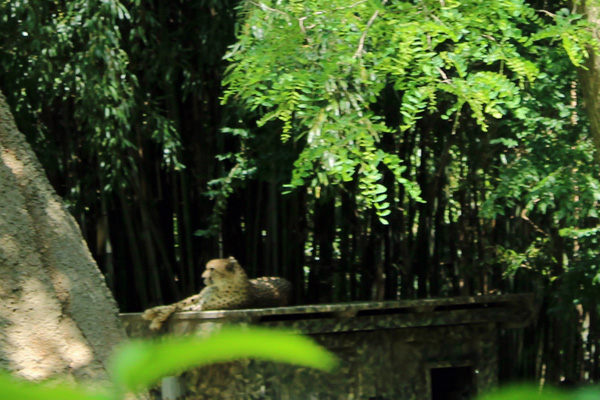 |
 |
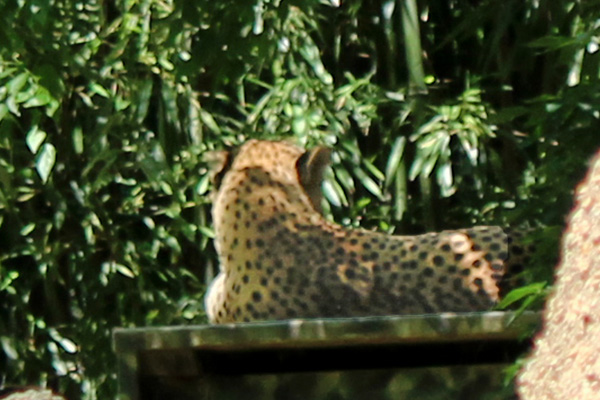 |
| |
| |
 |
| |
 |
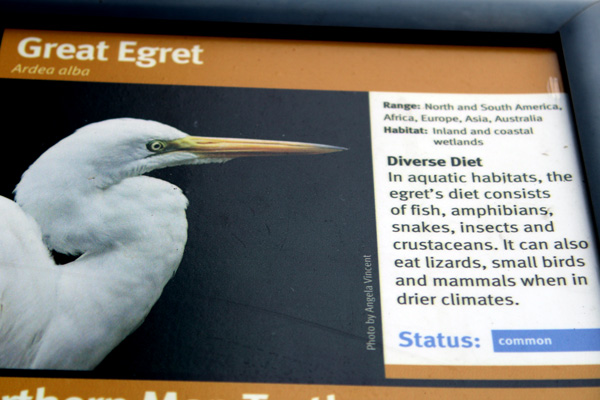 |
 |
 |
 |
 |











.jpg)






















 It had
a playground and a few things for kids to climb on. Too bad the big
turtle did not like Lee Duquette very much. Or maybe it liked him a
lot, and that is why it tried to eat him.
It had
a playground and a few things for kids to climb on. Too bad the big
turtle did not like Lee Duquette very much. Or maybe it liked him a
lot, and that is why it tried to eat him. 



